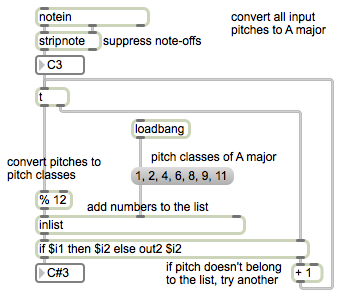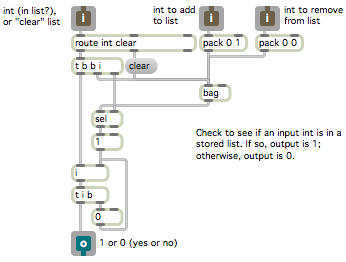One potential use of the “inlist” abstraction is to compare incoming pitches to a pitch class set. This patch uses a % 12 object to find the pitch class of an incoming pitch, then compares it with the members of a prescribed pitch class set. If it belongs to the pitch class set, it gets passed on unchanged; if it doesn’t belong to the pitch class set, it gets pushed up one semitone and tested again.
Note that this patch does point to a potential bug (a so-called “screw case”). If the pitch class set is null (the bag inside the inlist abstraction is empty), any incoming pitch would set this patch into an infinite loop and cause a stack overflow. However, we’re safe in this particular example because we have pre-loaded the pitch class set and there’s no way provided in the program to delete those numbers.


